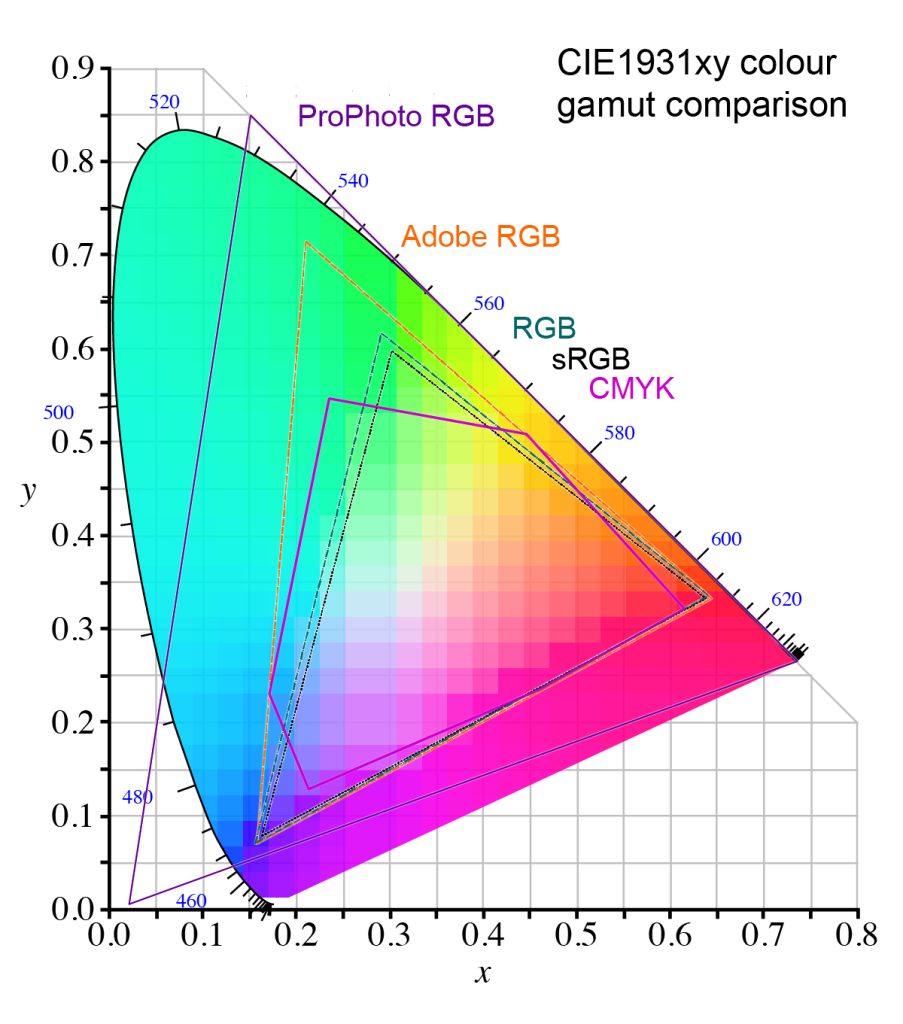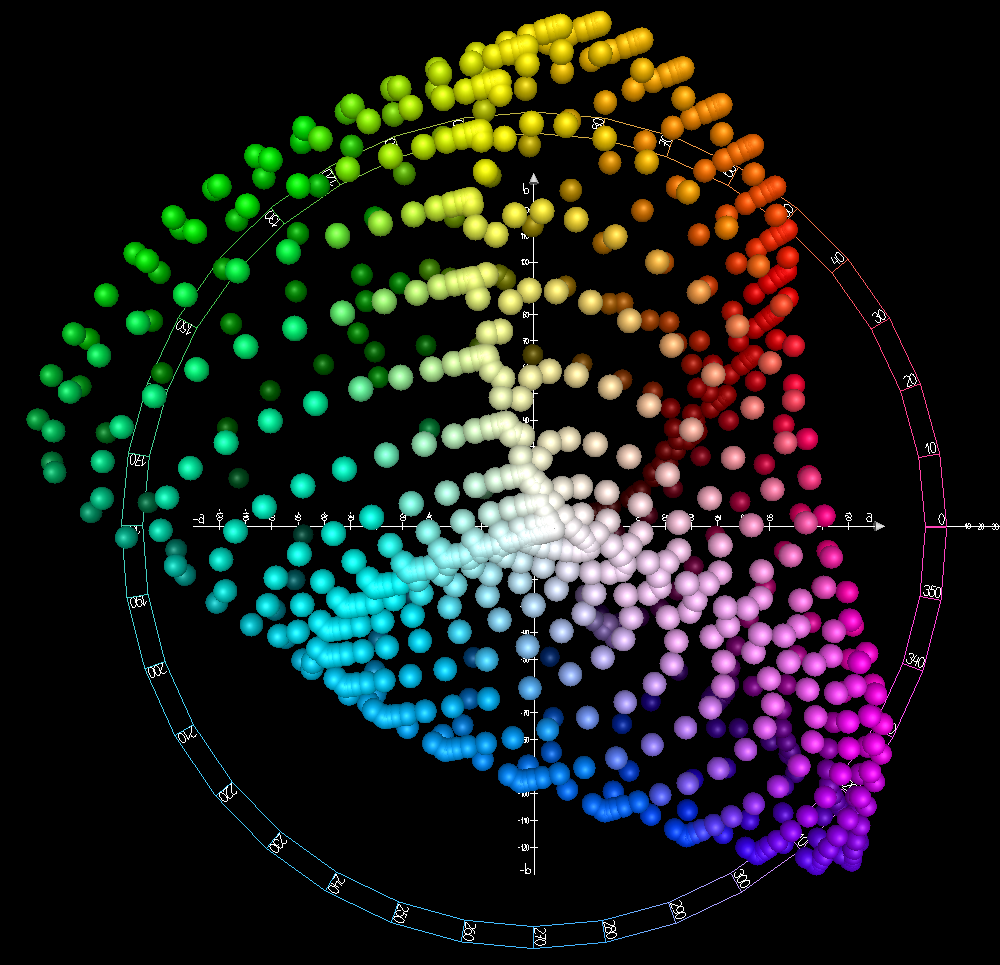Contemporary Colour Systems (c. 1930 – 2020+)

CIE 1931 colour spaces
CIE stands for “Commission Internationale de l’Eclairage” in French, which in English is the “International Commission on Illumination”. This organisation, founded in 1931, is the international authority on light, illumination, colour, and colour spaces.
The CIE 1931 colour spaces made the first clearly defined links between wavelengths in the visible spectrum and colour vision in humans. The development of this colour space became the standard tool for colour management in printing, digital displays and cameras. The two colour spaces – CIE 1931 RGB and CIE 1931 XYZ – were developed from a series of experiments in the late 1920s by William David Wright and John Guild.
These colour spaces and others, such as the CIELUV 1976 colour space, are still widely used. Figure 17 shows the CIE 1931 xy colour space and other colour space gamuts within CIE. As you can see in Figure 1.17, CMYK has a smaller gamut than the various RGB colour spaces – which can affect colour conversion for printing. See 3.3 Colour systems: printing in this resource for more information on colour spaces and conversion to CMYK.
CIELAB colour space
CIELAB colour space – also referred to as CIE L*a*b – is a colour space defined by the International Commission on Illumination (CIE) in 1976. Its three colour values are L – perceptual lightness, and a/b for what was thought to be at the time, the four unique colours of human vision: red, green, blue and yellow.
- a = red/green scale
- b = blue/yellow scale
CIELAB is intended to represent a perceptual colour space – what the human eye can see – i.e. a human colour gamut. LAB colour is a device-independent colour space that doesn’t relate to any particular technology like a computer, television or printer. This differs from colour systems like RGB or CMYK, which are dependent on specific devices or applications. Because CIELAB has a wider gamut than other colour spaces, it is a useful system for detecting small variations in colour, although depending on the limitations of your device to display or print colour, not all LAB colours may be accurately visually represented.
We often see CIELAB colour space represented as a 2-dimensional graph as in Figure 1.17, however, the best representation is in 3-dimensions, as shown in Figure 1.18.

View Chapter 3: Colour theory: working with colour for more detailed information about colour systems used in digital and physical media.
Colour gamut (also known as colour space) is the complete range or subset of colour that can be produced or recorded by an application, system or device.

